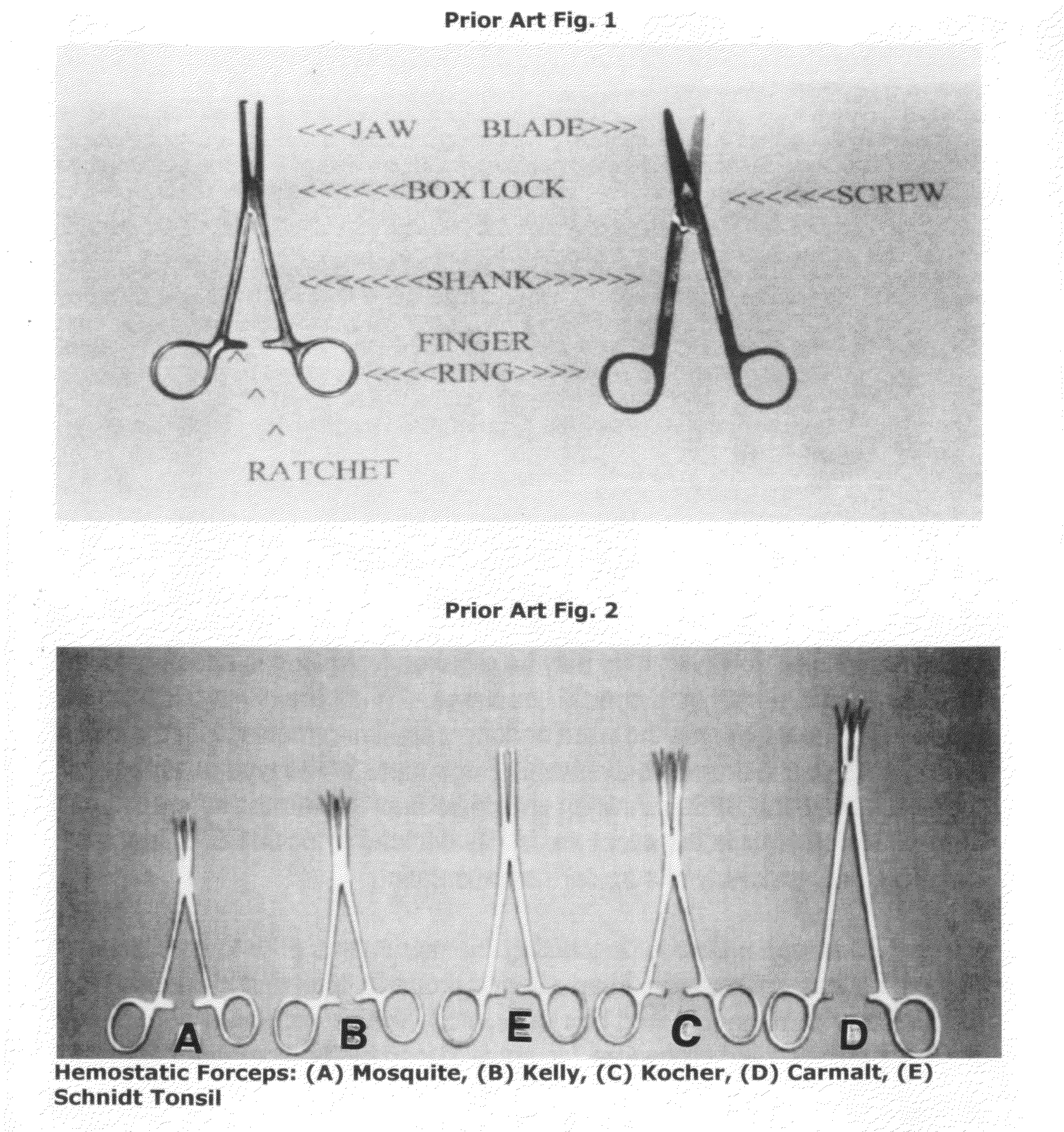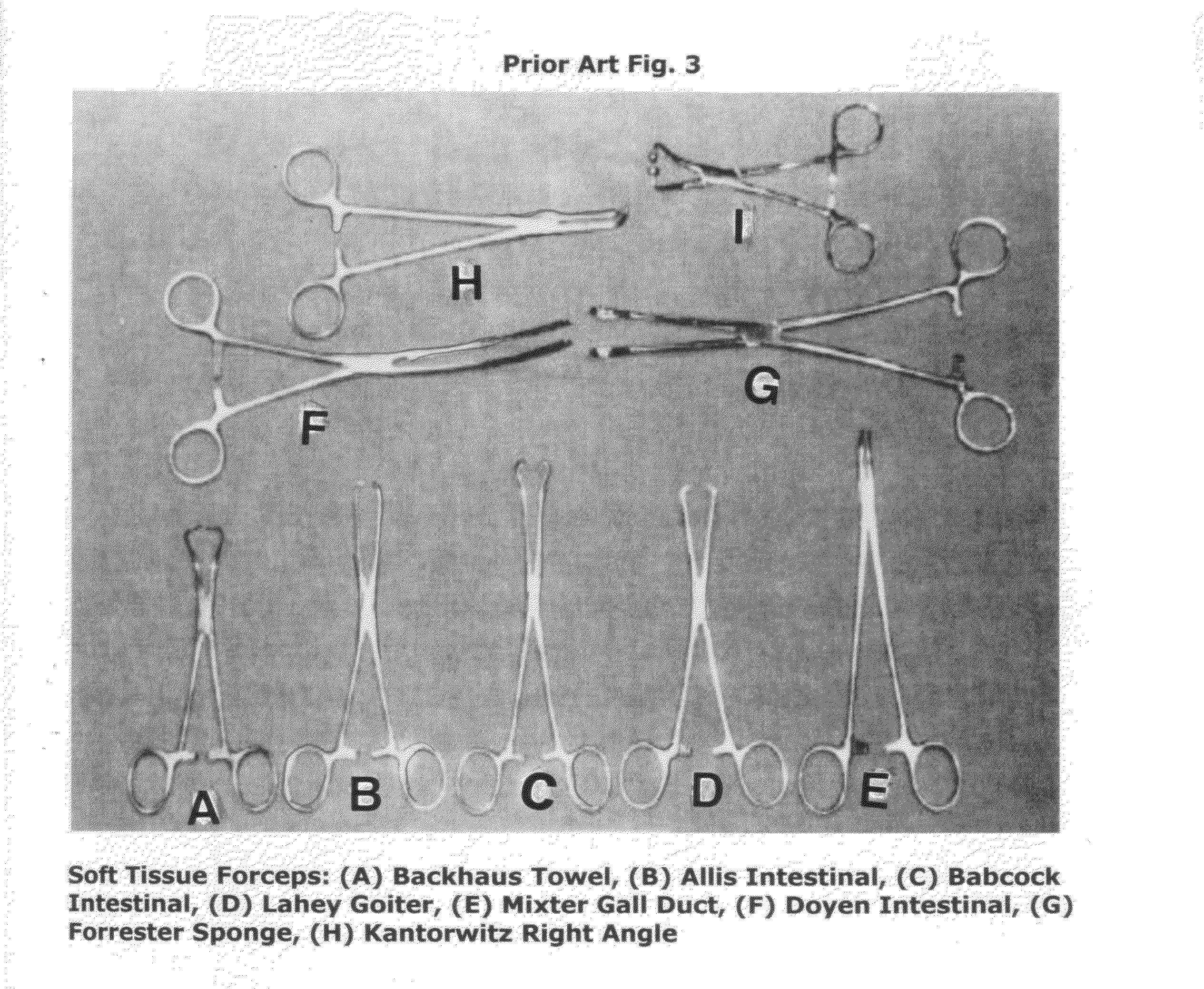Millimeter-sized recognition signal badge and identification system for accurately discerning and sorting among similar kinds, shapes, and sizes of surgical instruments
a recognition signal and millimeter-sized technology, applied in the field of millimeter-sized recognition signal badge and identification system for accurately discerning and sorting among similar kinds, shapes and sizes of surgical instruments, can solve the problems of extending the life of the needle holder, and affecting the operation efficiency of the instrumen
- Summary
- Abstract
- Description
- Claims
- Application Information
AI Technical Summary
Benefits of technology
Problems solved by technology
Method used
Image
Examples
Embodiment Construction
[0144]The present invention is a discrete signal-emitting badge and operative system for recognizing, differentiating and distinguishing among the many kinds, shapes and sizes of surgical instruments and tools commonly used today for human and veterinary surgeries. The signal-emitting badge is a discrete millimeter-sized article of manufacture which can be easily affixed to an exposed surface of any type, any configuration and any dimension of surgical instrument or tool; and includes a well-cushioned and protected photovoltaic cell-integrated chip transponder unit embedded within a safeguarding three-tier stack construct. The photovoltaic cell of the embedded transponder is activated by the introduction of light energy in any form; and once activated, provides electric power to the electronic circuitry of the transponder unit of the instrument-affixed badge such that a responsive identifying RF signal is emitted to the ambient atmosphere. That emitted responsive identifying RF sign...
PUM
 Login to View More
Login to View More Abstract
Description
Claims
Application Information
 Login to View More
Login to View More - R&D
- Intellectual Property
- Life Sciences
- Materials
- Tech Scout
- Unparalleled Data Quality
- Higher Quality Content
- 60% Fewer Hallucinations
Browse by: Latest US Patents, China's latest patents, Technical Efficacy Thesaurus, Application Domain, Technology Topic, Popular Technical Reports.
© 2025 PatSnap. All rights reserved.Legal|Privacy policy|Modern Slavery Act Transparency Statement|Sitemap|About US| Contact US: help@patsnap.com



